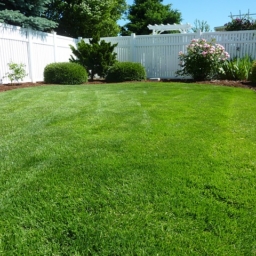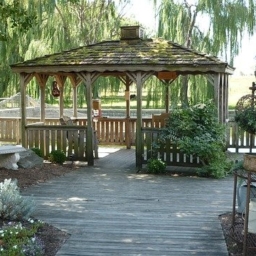Vinyl Fence, Increasingly Popular
Vinyl fence is a popular choice in many states as it withstands a variety of climates. It requires little maintenance and keeps a polished, well-kept look through the seasons.
Why Vinyl Fence
Unlike wood fencing, you won’t see signs of wear from the seasons’ changing—year after year, no warping, splitting, or peeling paint. Your maintenance is rinsing and maybe a little bit of spot cleaning. A garden hose will take away most of your dirt or build up. If you find animal droppings or tree debris challenging to remove, gentle dish soap and a little elbow grease will do the trick!
You can choose a texture; wood grain, stucco, or smooth, suitable for multiple housing styles. Textured vinyl is a safer option for children or pets. Have the appearance of wood without the risk of splinters. Choose the height and construction. Privacy, semi-privacy, or picket fencing. depending on your needs.
Choosing a High-Quality Vinyl Fence
When choosing to invest in an outdoor project, less isn’t always best. That’s not to say you won’t find a reasonable price. The vinyl wall thickness is essential in purchasing a quality fence. We recommend five-inch posts and a minimum wall thickness of .135 inches. Buying thick, sturdy vinyl is heavy. The bottom rail should be internally reinforced with galvanized steel to support the weight. High-quality gates will also require internal support.
The best vinyl to purchase is virgin vinyl. It is the most durable, strong enough to weather outdoor conditions. The vinyl mixture includes stabilizers, pigments, impact modifiers, and processing aids. The best fences are prepared with UV inhibitors such as titanium dioxide to protect the pigment.
Another high-quality indicator is fencing labeled ASTM F964-09. These vinyl fences are put through rigorous testing, marking them safe for commercial, residential, or agricultural use. Lastly, you want to look for warranties, a lifetime, or a limited lifetime.
Reconsider a Low-Quality Fence
Although viewed as eco-friendly, recycled vinyl fencing is not your strongest option. Recycled vinyl has been broken down from its original structure and reformed into a new product. This process weakens the original agents, leaving the fence weak or brittle. A small rock thrown from a lawnmower or strong wind could cause damage. The process affects the UV inhibitors, leaving fencing at risk of staining and fading. Fading can make replacing broken pieces an eyesore, with multiple planks in a variety of colors.
A low-quality vinyl fence may require wood posts for stability; this is something you want to avoid. Wood is susceptible to rot, needing maintenance or replacing. Vinyl should eliminate maintenance associated with wood fencing.
Lower quality fences usually do not include lifetime warranties, or you may see warranties with exclusions. It is not uncommon to see gates excluded from warranties due to wear and tear.
Professional Installation of Vinyl Fence
Vinyl fence installation is a minimum two-person job. Posts for a 6-foot fence should be 9-foot long and buried 3-foot deep with no exceptions. Fence posts need to be square to avoid gapping or spacing. Gates only require one inch of space on either side for installation, leaving little room for error when setting your posts.
If your property isn’t level, you will need to create tiers. Your tiered posts will need to be tall enough to accommodate the change in terrain. Tiering panels will leave space below your fence to be filled in later.
Not ready to tackle this installation alone? The professionals at Roark Fencing have the experience and knowledge to build you a beautiful vinyl fence. Take the stress and the measuring out of installation and contact us today!


